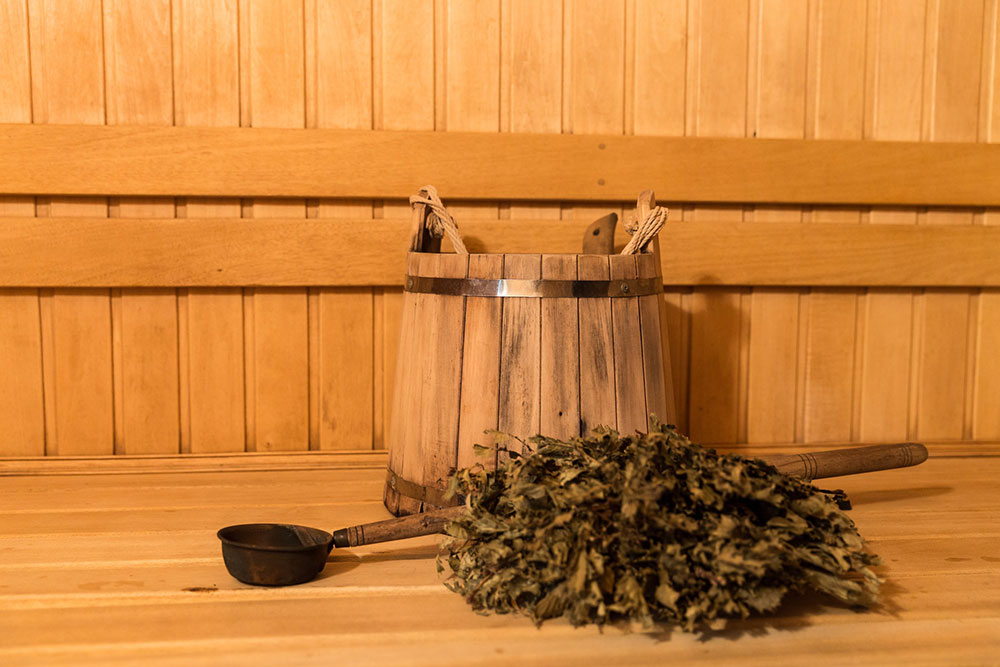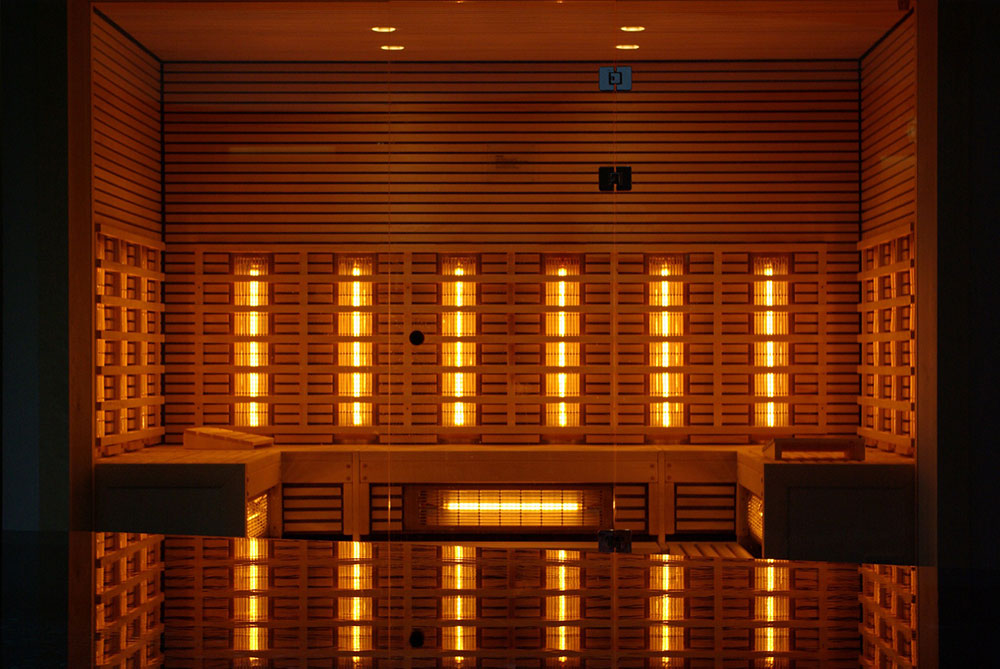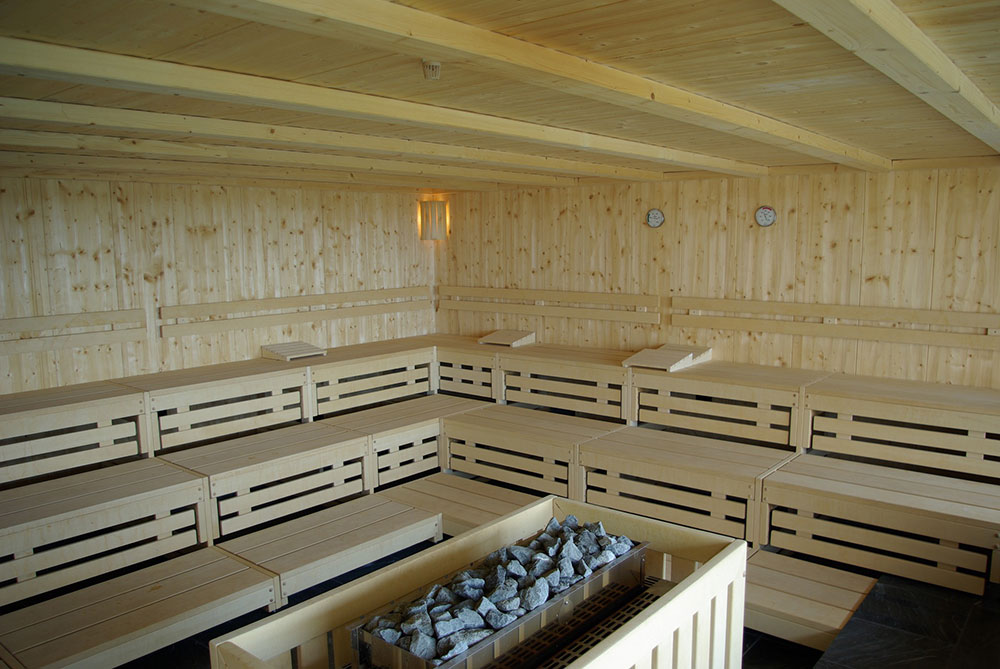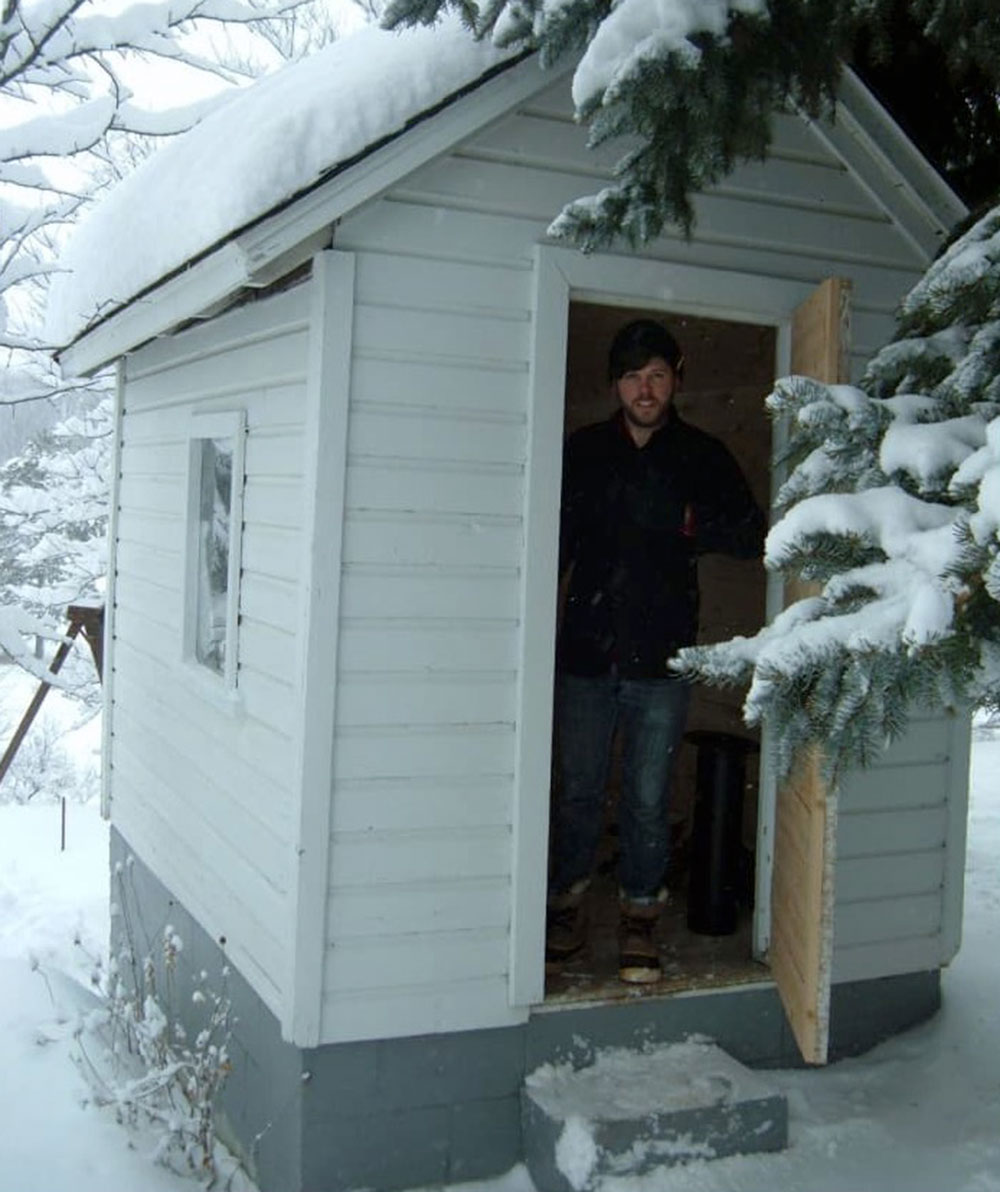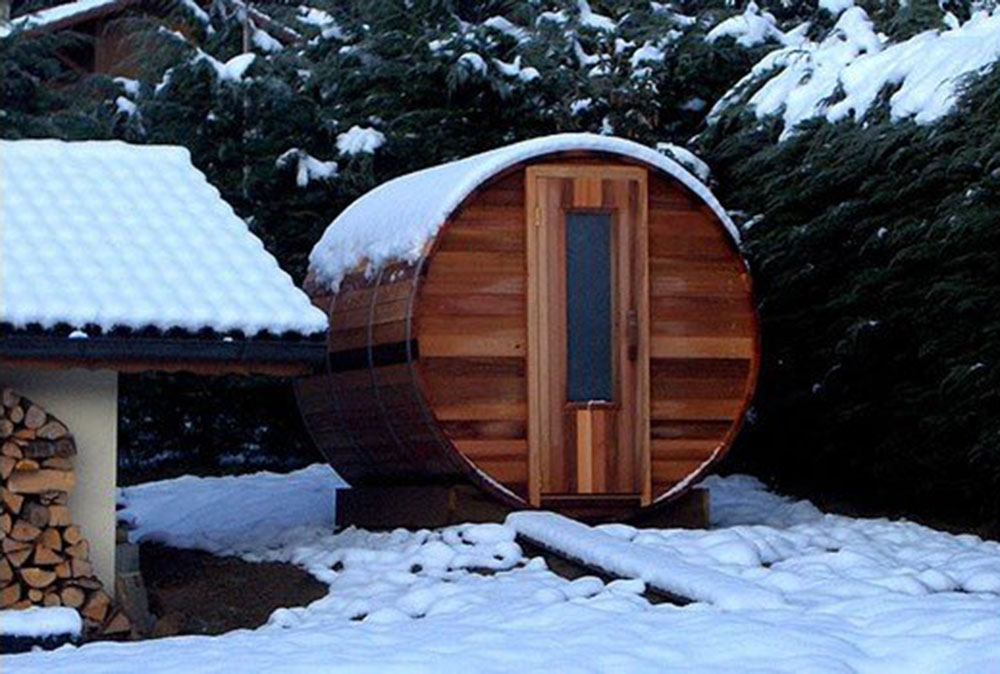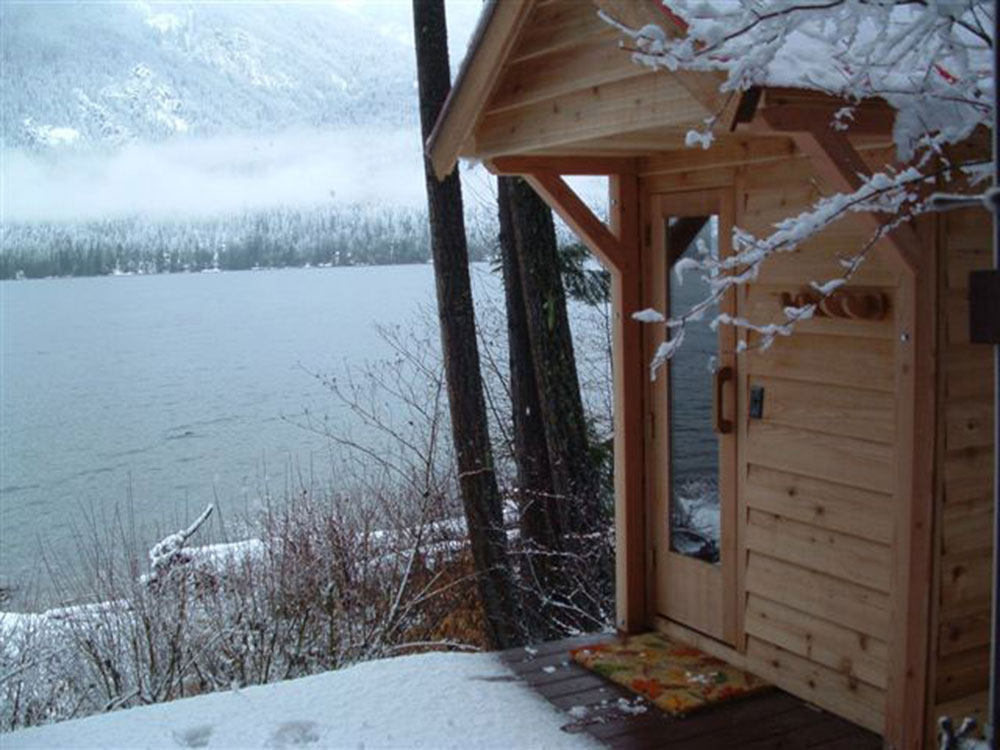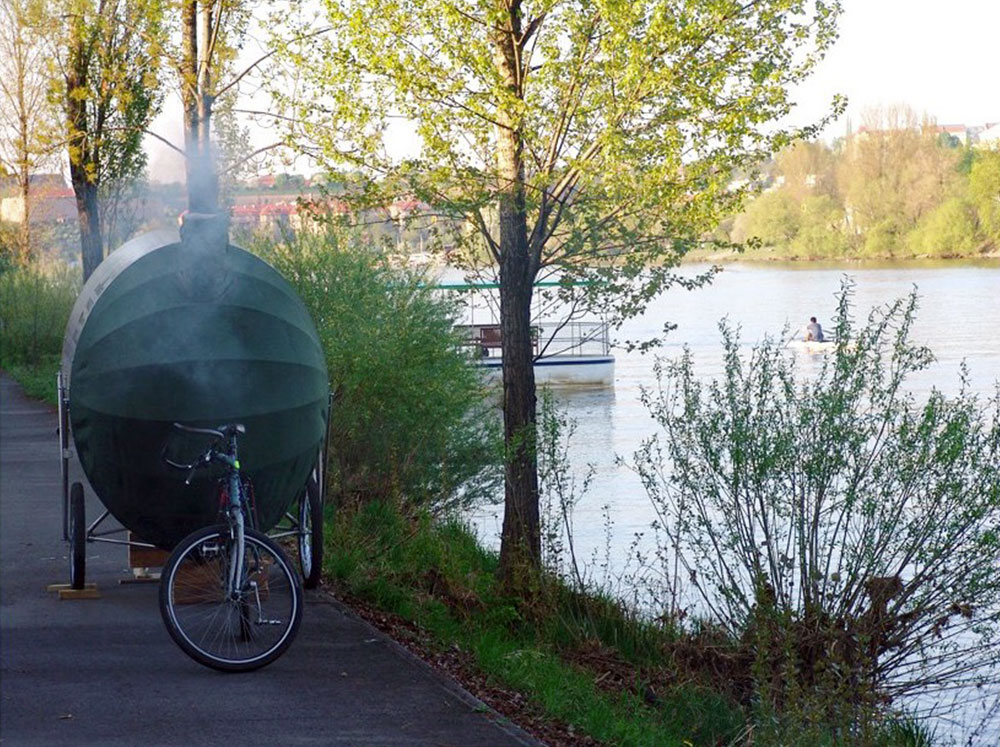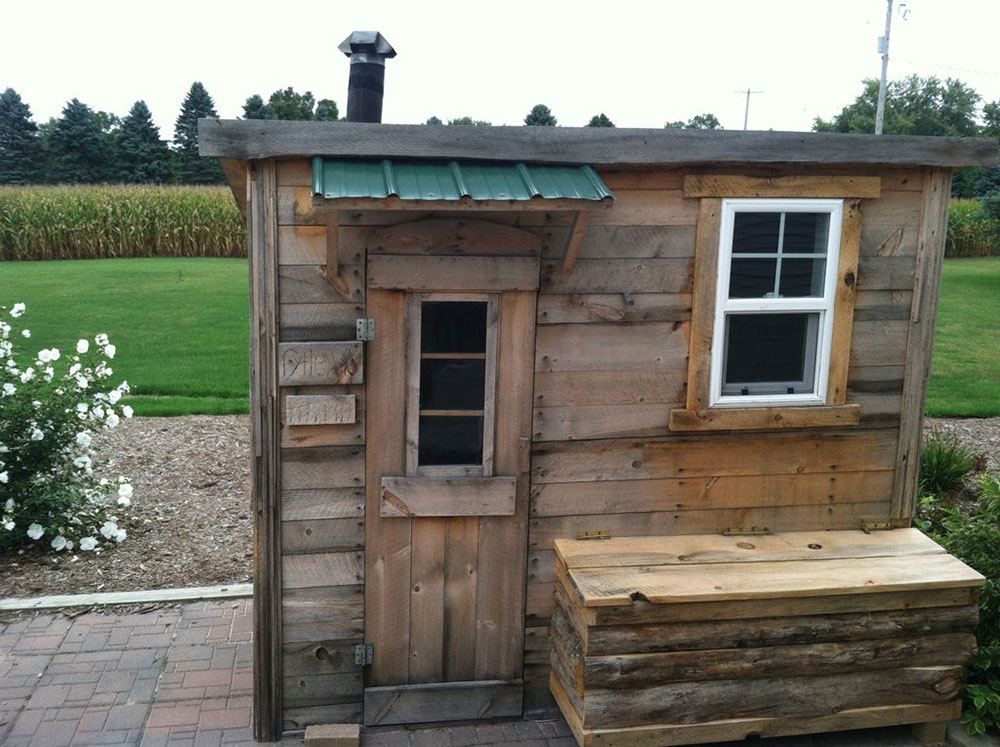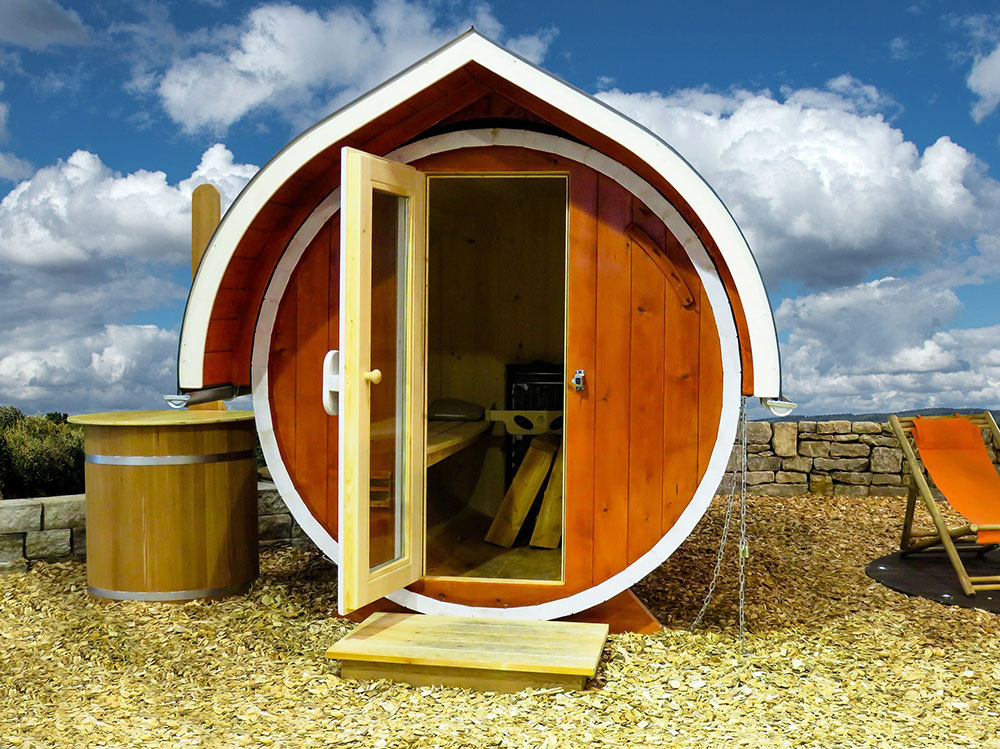Saunas have been a part of many cultures in Northern Europe for millennia. Today, they are popular in almost every corner of the world and are praised for relaxing muscles, improving circulation, and detoxifying the body. While there is some debate about whether saunas actually do all these things, people who use them swear that they feel better after a session in a sauna. The idea behind a sauna is to increase the core temperature of the body through perspiration. This stimulates blood flow to remove toxins from the body with the sweat produced from heat exposure. Did we spark your interest? Read on to find out what makes them so effective at making people happier and healthier every day, and more importantly–how you can DIY an outdoor sauna for your own home!
Here are the five great outdoor saunas for home spa-goers we’ll be discussing below:
DIY Wood Burning Outdoor Sauna | InstructablesPortable Outdoor Sauna on a Bike | H3T Architects4 x 5 Outdoor Sauna Kit | Cedarbrook SaunasPrefab Outdoor Sauna | Cedar Barrel SaunasDIY Outdoor Sauna Shed Conversion | Dengarden
Indoor vs Outdoor Saunas
Even though most people use saunas inside their homes, outdoor saunas definitely have their place:
An outdoor sauna is more affordable than its indoor counterpart. You can build one yourself with minimal effort and expertise. It is typically cheaper to put together a traditional or herbal sauna outside your home than buying a fully equipped unit.Outdoor saunas are usually much larger than their indoor equivalent, making it easier to accommodate multiple people.
On the flip side, indoor saunas have some benefits that allow them to stand out from outdoor versions.
The main benefit of an indoor sauna is its privacy and insulation. Since these units are usually located inside your home, you do not need to worry about insects such as mosquitoes or flies entering the unit, nor tracking in dirt or debris from outside.
An outdoor sauna is a good investment if you are looking for an alternative way to unwind after work or during the weekends.
Which Is the Best Outdoor Home Sauna for You?
The barrel sauna is arguably the best type of outdoor sauna due to its simplicity and portability. These units feature a cylindrical shape from an assembly of wooden planks, resulting in a “barrel” like structure. The best thing about barrel saunas is that you can put them together yourself. Just look for outdoor sauna kits near you to find the best one for your needs. The Costco sauna section is an excellent place to start your search.
Infrared saunas are the best choice for your wallet in the long term, as they are inexpensive to run.Steam saunas are recommended for people looking to have an authentic experience of traditional Finnish culture but require more components to achieve their therapeutic benefits.
(We cover different types of saunas in greater depth further down the page. Keep reading or jump straight there.) But by no means are barrel saunas the only game in town. Below, we look at some other kits and ideas that might give you some ideas for your own build.
Five Outdoor Sauna Kits and DIY Ideas Worth Considering
It goes without saying that a sauna can be a fairly hefty investment. However, if you are a handy person who does not mind getting your hands dirty, there are a fair few DIY outdoor sauna kits and designs available. And installing them won’t cost nearly as much as it would with a traditional sauna. Here are some of our favorite affordable outdoor saunas:
1. DIY Wood Burning Outdoor Sauna | Instructables
If you are a fan of the traditional Finnish sauna, this particular unit might just be the thing for you. We loved how the team at Instructables made it so easy to DIY this rustic outdoor sauna for minimal investment. Here are the plans.
2. Portable Outdoor Sauna on a Bike | H3T Architects
Ingenious is a word that is thrown around too often nowadays. However, in the case of the Portable Outdoor Sauna by H3T Architects, ingenious is the perfect word to use to describe it. Want to surprise a friend with a sauna session right outside their house? No problem; just hook up this bad boy to your bike and take it wherever you want to go. Learn more about this portable outdoor sauna here.
3. 4 x 5 Outdoor Sauna Kit | Cedarbrook Saunas
This is another excellent option for people looking for an outdoor sauna that comes as a prefab. Assembling this unit is simple; all you need is a screw gun to fasten the panels together. This small, 4’x5′ unit is a good choice for couples, as it only accommodates 2 people. Learn more about this prefab outdoor sauna unit here.
4. Prefab Outdoor Sauna | Cedar Barrel Saunas
The beauty of prefab designs is that they require very little know-how on your part to install. This particular barrel sauna is large enough to accommodate up to 8 people comfortably, meaning it can act as an excellent hangout joint for you and your family or friends. Check out this outdoor sauna here.
5. DIY Outdoor Sauna Shed Conversion | Dengarden
Have you been thinking about renovating or doing away with that derelict shed completely? Here’s an idea; how about converting it into an outdoor sauna? The folks who pulled off the conversion above claim it only cost them $1,000! Here are the design plans.
Types of Saunas Explained
Due to the numerous health benefits associated with sauna usage, it comes as no surprise that they have been adopted widely the world over. Consequently, tweaks have been made to the traditional sauna to optimize for the best user experience, resulting in several variants. The following are the most common types:
Traditional Saunas
Traditional saunas are the most popular type of sauna. They are also known as Finnish saunas or wood-burning saunas. Traditional saunas are referred to as “dry” since they do not use lots of water to generate steam. They have a rather simple designs that allow the user to experience the highest intensity of heat possible. If you are looking for an outdoor sauna, the traditional sauna would be an excellent choice.
Far Infrared Sauna
Unlike a traditional sauna that works by heating the air around the room, the far infrared sauna heats your body directly using infrared rays. The idea is to raise your body’s internal core temperature without subjecting you to the high levels of heat associated with traditional saunas, which can be uncomfortable to some.
Steam Saunas
Steam saunas are just like traditional saunas, except they use lots of water to generate higher humidity levels than their dry counterparts. These units also use an external furnace for heating purposes and require more equipment, such as fans, pumps, and controllers, to maintain the steamy conditions. Steam saunas are thought to be the best choice for people with respiratory problems, such as asthma, as the steam helps clear out the mucus that makes it difficult to breathe.
What’s the Difference Between a Dry and Wet Sauna?
A dry sauna does not involve lots of water. This means the ritual is steam-free. A far infrared sauna is a good example of a dry sauna, as no water is used in the process. Instead, it uses far-infrared waves to warm your body directly rather than heating the air around you. A traditional sauna is also considered dry, as it uses very little water. A wet sauna uses lots of water to create steamy conditions inside the room. Your preferences will determine your choice when it comes to these two sauna types.
Benefits of Using Saunas
Regular sauna usage can be incredibly beneficial to your holistic health. Some of these benefits include:
Pain Relief – Saunas may help to reduce chronic pain caused by nerve damage and arthritis. They do this by increasing blood flow and relaxing muscles in the body, improving overall pain management.Detoxification – Saunas help flush chemicals and toxins from the body. The heat causes you to sweat more, allowing for increased elimination compared to a typical hot shower or bath.Improved Circulation – Sweating in a sauna can improve circulation, which is good for the heart and beneficial for conditions such as cold hands and feet. It also helps break up blood clots that cause strokes or heart failures.Stress Management – Saunas cause the body to release endorphins and dopamine, which can boost mood. Dopamine is popularly known as the “happy hormone,” as it promotes feelings of well-being. Endorphins are tremendous pain and stress relievers.Improved Muscle Recovery – The increased blood flow produced by saunas is believed to play a role in speeding up muscle recovery after intense physical activity such as strength training or cardio.Skin Benefits – Sauna use can improve skin conditions such as psoriasis and eczema.Weight Loss – People often use saunas to lose weight because a sauna session can burn several hundred calories in a short period.Better Cardiovascular Health – A regular sauna routine may help reduce blood pressure and improve overall cardiovascular health.Help Stopping Smoking – Saunas may be used to help people quit smoking by helping alleviate nicotine cravings and other withdrawal symptoms.
What Are the Risks Involved With Using a Sauna?
Hot, humid conditions can lead to heat-related illness if you do not take the necessary precautions. Symptoms of heat-related illness include muscle cramping, weakness, heavy sweating, nausea, and vomiting. If you have heart disease or hypertension, it might be wise to avoid saunas altogether. Since saunas essentially dehydrate the body, drinking lots of water before your session would be an excellent idea. Doing that will go a long way towards curbing the risks involved with sauna usage. You should also talk to your physician to find out whether sauna sessions would be good for you.
Who Should Use a Sauna?
If you would like to improve your health, detoxify your body, lose weight, gain muscle mass or improve athletic performance, you are welcome to use a sauna. However, saunas are not recommended for women who are pregnant/breastfeeding unless under medical supervision. Also at risk are children and significantly older people because of their lower body mass.
What Are the Benefits of Using a Sauna?
The immediate benefit is that you will feel relaxed and refreshed after your time in the sauna. Also, over time, regular use can help with ailments such as high blood pressure, high cholesterol, chronic pain, asthma and bronchitis, congestion, and migraines. It also can help with weight loss and could help you gain muscle definition if that is your goal.
How Long Should I Stay in the Sauna?
As a general rule, it’s a good idea to stay in a dry sauna for about 10-15 minutes and in a wet sauna for 5-10 minutes.
What Should I Wear in the Sauna?
It’s a personal choice. Some people prefer to wear a bathing suit, while others wear a T-shirt and shorts. While most movies depict people being almost stark naked in saunas, we would advise against doing that if you are going into a public sauna.
What Should I Do After Using the Sauna?
It’s recommended – particularly if you’ve used a dry sauna – to drink an electrolyte (sports) replacement fluid, such as Gatorade, after you are done with your session. This will help to replenish the water and electrolytes you have just lost. And, of course, drink plenty of water daily! If you’ve used a wet sauna, you’ll probably feel quite thirsty after getting out, so don’t forget to hydrate.
What if the Heat Makes Me Nauseous?
The best option would be to get out of the sauna and sit in a cooler room for a few minutes until you feel better. If it’s an emergency, see your doctor immediately. Some people also use a cold, wet towel on their heads if they’re feeling too hot. You might as well use a fan to blow cool air into the sauna as it will help with circulation. If you had an accident or got burned in the sauna, see your doctor immediately.
How Much Does an Outdoor Sauna Cost?
It will depend on the size and features of the sauna. Expect to pay around $3,000-$5,000 for a good quality “home” model; however, you can spend as much or as little as you like.
History of the Sauna
While the exact date people started using saunas is unknown, evidence suggests that the tradition started around 2,000 years ago in Finland and the Scandinavian countries. The Finnish sauna tradition originates from a pre-historic time when people used heated rocks to warm their homes during winter. They would then pour water on the hot stones to produce steam, which gave the sensation of increased warmth. The first saunas were rustic huts built by digging holes in the ground for people to sit in. The holes were then lined with heated stones to generate warmth.
Modern Day Saunas
Most modern-day saunas are electrically heated and have a sloped floor that lets water drain freely. The slanted floor allows for a more comfortable, stress-free seating position while allowing gravity to pull the sweat from your body through the pores and out onto the floor tiles into a drain.
Outdoor Saunas: Final Thoughts
Studies have shown that people who use saunas regularly are more likely to be healthier, feel less stressed, and even live longer. If you’re looking for a way to relax without having to pay membership fees or make reservations, an outdoor sauna might just be the answer. Got a DIY home sauna build you’ve been dreaming of? Better yet, have you already built it? Drop us a comment or link below–we’d love to hear how you’re making your outdoor sauna life work!
